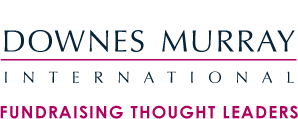
Every now and then there’s a board of directors – how can this be written diplomatically – that doesn’t seem to get it. This doesn’t happen often, but when it does it’s never a pretty sight. Thomas McLaughlin reports.
There are many reasons why nonprofits seem headed for doom, dysfunction, or both, and most of the time it isn’t directly attributable to board members.
But when it is a board problem, here are some frequent scenarios and potential fixes. Ideally, a board of directors is focused mostly on the future, less so on the details of the present. This is because boards of directors should be leaders, not outsiders immersed in management detail.
Board members’ preferred orientation to time is often connected with their personalities and what they do for work. Board members who work in technical roles often prefer to operate in the here and now. This means they could be uncomfortable with the kind of thinking that leaders must do to position a nonprofit for the next three or four years.
The solution to this kind of board dysfunction is to construct each board agenda so that the bulk of time will be spent focusing on future opportunities and challenges. Constructing the agenda so that the majority of items relate to future decisions requires that the CEO and board chair work closely together.
The term “trustee” is sometimes used to refer to a conventional nonprofit board member, but that is usually either a loose statement of philosophy – or an inaccuracy. In legal terms, a trustee holds property on behalf of an outside beneficiary. That is in no way similar to non-profit oard members’ responsibilities. Those are more related to leadership than conservation of assets, but the mythology persists.
Implicit in a trustee self-image is the idea that the trustee must protect the asset as their primary duty. But nonprofit board members are intended to lead the organisation, along with the CEO, and preserving assets for beneficiaries is never in the equation.
Protective Board Members
Board members who see their role as “protecting” the organisation will always be conservative in the literal definition of the term. While this role might work well for financial assets not owned by the trustee, it can lead to an exaggerated sense of outside threats and a paralysed nonprofit board if it becomes the dominant image of the board’s role.
A good board member selection process and continual self-education will fix this problem. One board, for example, recruited new members by inferring from their strategy the type of characteristics that would be most beneficial.
Any large industry develops its own jargon and shorthand references, and the non-profit sector is no exception. But nonprofits funded in large part by government are inevitably immersed in payment systems, quality assurance mechanisms, and political developments so detailed that even a nonprofit CEO may not be fully abreast of all the nuances.
Board members from outside the sector often speak of their meeting agendas as a thicket of obscure regulations, political connections and mystifying lingo. While these are all necessary elements to manage, board members quickly give up hope of being conversant in them and as a result their ability to make contributions is reduced.
Simplify Things
This is a situation where “not getting it” says more about the industry than about the board members. The solution? Reduce the language and complexities to an understandable level. Fundraising imperatives help shape a preference for wealthy board members and their personal ability to make contributions and for their networks of similar professionals.
The conflict these kinds of board members face is that they are so thoroughly steeped in equity investing and money management that they cannot operate in the non-equity world of nonprofits. Often their personal approach to governance becomes a largely passive and reflexive acceptance of majority decision-making.
Here’s what happened with the board of directors of a large national organisation.
Arguably the most powerful person in the room was a former corporate titan with an international reputation who sat silently during a lengthy presentation and discussion of nonprofit mergers.
His knowledge of the subject would have been welcomed by all, but for whatever reason he remained silent. Whether motivated by a sincere desire not to complicate the discussion, or for personal reasons, this kind of “denial of service” will make the board less effective.
Board presidents can be useful in reversing the situation simply by making a personal appeal, and the CEO has the ability to coax more input should they wish to do so.
Nonprofit board governance is an imprecise process at best. Although in theory the role of the board of directors is clear enough, the actual practices of boards vary greatly.
A non-profit board’s apparent passivity or disinterest may be a reflection of the difficulty of non-profit governance, but on occasion it is the result of a breakdown in the governance process itself. Left unchecked this can lead to confusion and decline. But with the right kind of self-reflection and support, most boards will get it – and get it done.
With acknowledgement to The NonProfit Times
www.thenonprofittimes.com

Like most modern websites, www.dmi.co.za places small files called 'cookies' on your computer to make your browsing experience as pleasant as possible. By entering this site you accept our Privacy Policy and Cookies Notice
If you’d prefer us not to use cookies, then please turn them off.
Close window and proceed to www.dmi.co.za